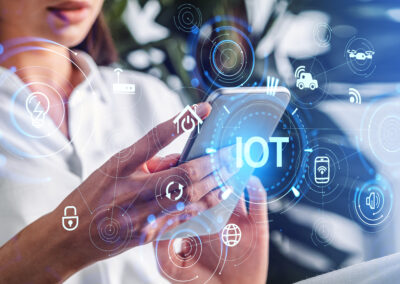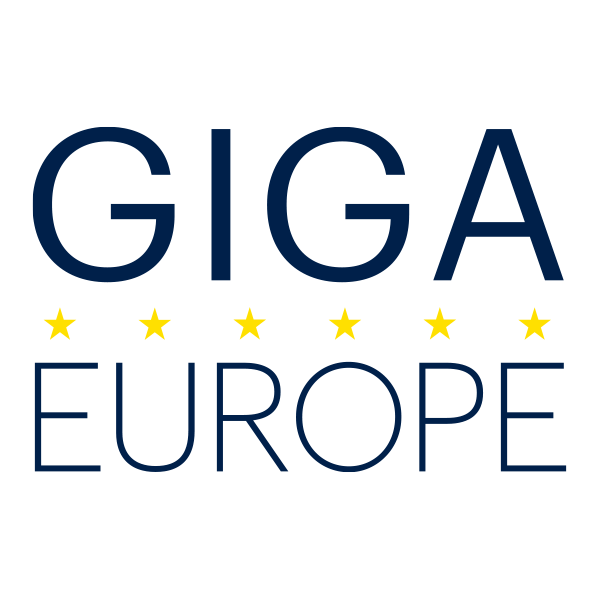By Irina Varlan, Managing Director of GIGAEurope
Brussels – 25 May 2021 – With the Digital Compass targets, the EU sets a clear course towards achieving its digital sovereignty ambition by 2030. Concrete targets on connectivity, digital skills, public services and transformation of businesses aim to enable Europe to play a leadership role in driving green & digital transition and economic recovery after the pandemic.
By setting values and rules around the deployment of data-driven emerging digital technologies such as AI and IoT, Europe aspires to create trust in digitisation. It will stimulate enterprises, public administrations and end-users to embrace innovative digital applications and boost Europe’s digital economy and society.
But connectivity will be the cornerstone to delivering a successful EU Digital Decade, building on the current momentum for connectivity in keeping societies and businesses running during the pandemic. By 2030, every European should have access to gigabit speed and 5G needs to be rolled out across the Union. This is no small feat for telecom operators. The current Digital Decade is characterised by a number of important digital trends, which result in exponential data growth, from 33 zettabytes in 2018 to an expected 175 zettabytes worldwide in 2025.
Connectivity providers have anticipated these trends. Over the past decade, they have continued to invest in network roll-out and innovations to allow for ubiquitous fixed-mobile access, faster speeds and lower latency.
Of the €125bn per annum investment gap to meet the needs of the Digital & Green Transition, connectivity infrastructure alone amounts to €42bn per year, according to the European Commission. To close this investment gap, a mix of private investment and public funds is needed in the coming years.
More importantly, policies will have to provide incentives for private infrastructure investment. Finding the right balance on state aid will be key with the significant amount of public funding hitting the connectivity market over the coming years. Funds from the Recovery & Resilience Facility for the digital transition, including broadband connectivity, already amount to €134 billion alone. Furthermore, the revision of the Broadband Cost Reduction Directive and the forthcoming 5G/6G Action Plan provide opportunities to simplify rules for deploying networks and setting an ambitious target for future connectivity.
GIGAEurope, representing the private investors in Europe’s very high capacity networks, looks forward to collaborating closely with EU policymakers, national and local governments, industry and citizens to ensure every European can connect to a gigabit network. By fostering a dialogue on best practices and planned network roll-outs and upgrades, we can jointly define the local areas that are underserviced and discover where public funds are needed to repair a market failure. It is in the general interest that recovery funds are not unnecessarily spent on duplicating existing gigabit-capable infrastructures. This can be achieved by assuring compliance with the Broadband State Aid rules.
Current providers of very high capacity networks are constantly adapting their technology roadmaps to meet, and probably exceed, the 2030 gigabit targets. For example, in the Netherlands, VodafoneZiggo recently achieved 10Gbps download speeds in a test over its existing Hybrid Fibre Coax network. Vodafone and Nokia tested new network technology in Germany and recorded 100Gbps speeds over a single wavelength. Virgin Media completed a live-trial on its current network in the UK delivering 2.2Gbps and tested new network technology achieving 10Gbps symmetric speeds.
The connectivity sector in Europe is up to the challenge to meet Europe’s Digital Decade ambitions.
The connectivity sector in Europe is up to the challenge to meet Europe’s #DigitalEU2030 ambitions.
— Irina Varlan (@IrinaVarlan) June 1, 2021
Read how below ⬇ https://t.co/fUDthV8e0M
RELATED ARTICLES

Do We Have All the Right Networks for the Future?

Be Courageous, Confident, & Curious: Insights for Women in ICT

On the Digital Highway – Destination: a Competitive Europe

EU Connectivity Needs Fast Rollout – Policies Must Aid Objectives

Interconnecting the Connectivity Talks

The EU made the case for digital – now skills must follow

Precision Agriculture: Leveraging digital tools to respond to a dual imperative

Enabling the Enablers: A Path to Europe’s Green Transition

How to ensure no European is left behind?

How connectivity can help bridge the digital trust gap

